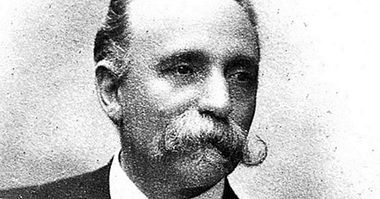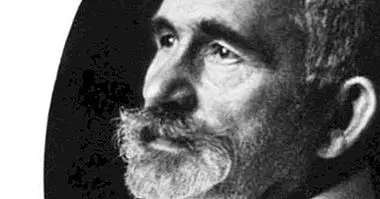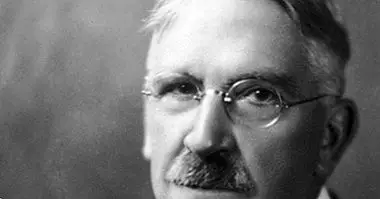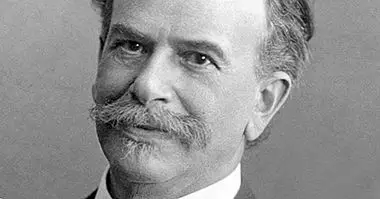Philip Zimbardo: biography of this social psychologist
Philip Zimbardo (1933-) is one of the most popular social psychologists today. He is recognized for his theories related to the situational attribution of behavior, prosocial behaviors, the relationship between obedience and authority, among others. Especially it is recognized by the classic and controversial experiment of the Stanford Prison, made in the decade of the 70's in the vicinity of Stanford University.
Next we will see a biography of Philip Zimbardo , as well as a brief description of the experiment that led him to be recognized internationally as one of the most representative social psychologists of the 20th century.
- Related article: "History of Psychology: authors and main theories"
Philip Zimbardo: biography of this social psychologist
Philip Zimbardo was born on March 23, 1933 in New York City, in the bosom of a Sicilian family based in the Bronx neighborhood. In the year of 1954, Zimbardo he specialized with a triple degree of psychologist, sociologist and anthropologist from Brooklyn College .
Subsequently, he did postgraduate studies in social psychology and finally obtained a doctorate in the same area from Yale University. In the latter he taught, and did the same at the University of New York and Columbia University. He was also president of the American Psychological Association (APA) in 2002, and has been awarded numerous awards that recognize his research as one of the most important contributions to psychology.
He is currently professor emeritus at Stanford University , where he served as a teacher for 50 years, and also serves as a teacher at the University of Palo Alto in California.
The Stanford prison experiment
In the year of 1971, Philip Zimbardo, together with other researchers, conducted an experiment that led him to be recognized as one of the most representative social psychologists of the time.
It is an experiment of the Stanford prison, which had the objective of studying the influence of the social environment on the character and actions of a person. Through this experiment I wanted to demonstrate how social situations have the power to significantly influence individual behavior .
In a very broad way, the experiment consisted in simulating a prison in the facilities of Stanford University, establishing different roles for each of the 24 men who participated.
Randomly they were divided into two groups: some were guards, while others were prisoners . All of them were university students and had been previously evaluated to determine a good state of physical and psychological health.
- Maybe you're interested: "The Stanford Prison Experiment by Philip Zimbardo"
Results and repercussions
In exchange for their participation they were offered an economic remuneration and, at the beginning, they were asked to wear specific uniforms in accordance with their role. The prisoners were taken to the prison simulating a detention. While there they were assigned a number and a space. On the other hand, the guards were prohibited from exercising physical violence , at the time they were asked to direct the prison as they saw fit.
Although the experiment was designed to last several weeks, it had to be suspended before the first one ended, because each of the participants had assumed his role in such a way that serious dynamics of violence were being generated .
With this experiment it was concluded, among many other things, that it is the situation that generates both violent behavior and submission to authority. In addition, for the results that were released once finalized, Zimbardo was called to testify as an expert witness in the trials of the humiliations that occurred in the Iraqi prison of Abu Ghraib.
Some criticisms
Due to the conditions in which this experiment was designed and carried out, Zimbardo and his collaborators have received numerous criticisms. The most widespread is the ethical questioning about the tendency of a large part of scientific research to generate severe situations of stress in the participants, with such a hypothesis check .
On the other hand, the possibility of generalizing their findings has been questioned, due to the homogeneity of the sample they used. In the same sense, the presence of gender biases has been questioned (for example, only men participated, including the researchers themselves), as well as part of considering theories about prosocial behaviors that tend to be measured based on male behavioral models. .
Later works: psychology of heroism
Currently, Philip Zimbardo continues to develop studies on prosocial behavior , more specifically in critical circumstances, and in relation to what he has called "heroism". He is founder and president of the Project of Heroic Imagination (Heroic Imagination Project), where the "Psychology of heroism" and the training of "heroic behaviors" have been worked on in an important way.
Outstanding works
Among the most outstanding works of Philip Zimbardo are The Lucifer Effect: Understanding how good people turn bad, where analyzes the parallels between the Stanford prison experiment and the mistreatment of the Iraqi prison of Abu Ghraib . Other of his important works are Psychology and life, Y The paradox of time.
Bibliographic references:
- American Psychological Association (2018). Philip G. Zimbardo. Retrieved August 30, 2018. Available at //www.apa.org/about/governance/president/bio-philip-zimbardo.aspx.
- García Dauder, S. and Pérez Sedeño, E. (2018). The scientific 'lies' about women. Waterfall: Madrid.
- Stanford Prison Experiment (2018). The Stanford Prison Experiment: a simulation study on the psychology of the imprisonment. Retrieved August 30, 2018. Available at //www.prisonexp.org.
- Heroic Imagination Project (2017). Our Mission Retrieved August 30, 2018. Available at //www.heroicimagination.org.
- Networks-The slippery slope of evil (2010). Networks for science. Retrieved August 30, 2018. Available at //www.rtve.es/alacarta/videos/redes/redes-pendiente-resbaladiza-maldad/736047/.
- Biographical Sketch (2000) Philip G. Zimbardo. Retrieved August 30, 2018. Available at //www.zimbardo.com/votezim/bio.html.
- Eagly, A. and Crowley, M (1986). Gender and helping behavior: a meta-analysis review of the social psychological literature. Psychological Bulletin, 100 (3): 283-308.



















